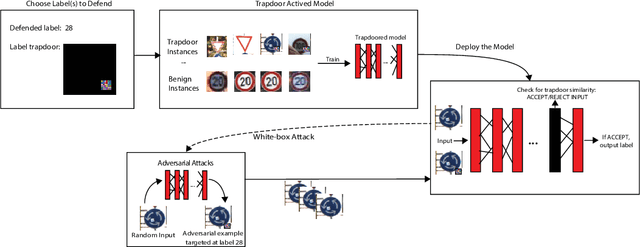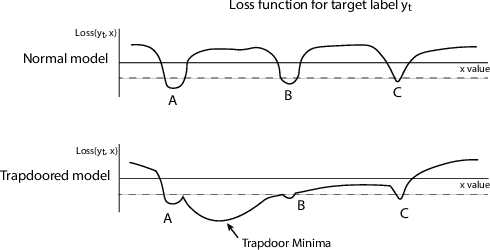Bolun Wang
Re$^3$Sim: Generating High-Fidelity Simulation Data via 3D-Photorealistic Real-to-Sim for Robotic Manipulation
Feb 12, 2025Abstract:Real-world data collection for robotics is costly and resource-intensive, requiring skilled operators and expensive hardware. Simulations offer a scalable alternative but often fail to achieve sim-to-real generalization due to geometric and visual gaps. To address these challenges, we propose a 3D-photorealistic real-to-sim system, namely, RE$^3$SIM, addressing geometric and visual sim-to-real gaps. RE$^3$SIM employs advanced 3D reconstruction and neural rendering techniques to faithfully recreate real-world scenarios, enabling real-time rendering of simulated cross-view cameras within a physics-based simulator. By utilizing privileged information to collect expert demonstrations efficiently in simulation, and train robot policies with imitation learning, we validate the effectiveness of the real-to-sim-to-real pipeline across various manipulation task scenarios. Notably, with only simulated data, we can achieve zero-shot sim-to-real transfer with an average success rate exceeding 58%. To push the limit of real-to-sim, we further generate a large-scale simulation dataset, demonstrating how a robust policy can be built from simulation data that generalizes across various objects. Codes and demos are available at: http://xshenhan.github.io/Re3Sim/.
Gated Slot Attention for Efficient Linear-Time Sequence Modeling
Sep 11, 2024



Abstract:Linear attention Transformers and their gated variants, celebrated for enabling parallel training and efficient recurrent inference, still fall short in recall-intensive tasks compared to traditional Transformers and demand significant resources for training from scratch. This paper introduces Gated Slot Attention (GSA), which enhances Attention with Bounded-memory-Control (ABC) by incorporating a gating mechanism inspired by Gated Linear Attention (GLA). Essentially, GSA comprises a two-layer GLA linked via softmax, utilizing context-aware memory reading and adaptive forgetting to improve memory capacity while maintaining compact recurrent state size. This design greatly enhances both training and inference efficiency through GLA's hardware-efficient training algorithm and reduced state size. Additionally, retaining the softmax operation is particularly beneficial in "finetuning pretrained Transformers to RNNs" (T2R) settings, reducing the need for extensive training from scratch. Extensive experiments confirm GSA's superior performance in scenarios requiring in-context recall and in T2R settings.
RWKV: Reinventing RNNs for the Transformer Era
May 22, 2023



Abstract:Transformers have revolutionized almost all natural language processing (NLP) tasks but suffer from memory and computational complexity that scales quadratically with sequence length. In contrast, recurrent neural networks (RNNs) exhibit linear scaling in memory and computational requirements but struggle to match the same performance as Transformers due to limitations in parallelization and scalability. We propose a novel model architecture, Receptance Weighted Key Value (RWKV), that combines the efficient parallelizable training of Transformers with the efficient inference of RNNs. Our approach leverages a linear attention mechanism and allows us to formulate the model as either a Transformer or an RNN, which parallelizes computations during training and maintains constant computational and memory complexity during inference, leading to the first non-transformer architecture to be scaled to tens of billions of parameters. Our experiments reveal that RWKV performs on par with similarly sized Transformers, suggesting that future work can leverage this architecture to create more efficient models. This work presents a significant step towards reconciling the trade-offs between computational efficiency and model performance in sequence processing tasks.
Deepfake Videos in the Wild: Analysis and Detection
Mar 11, 2021



Abstract:AI-manipulated videos, commonly known as deepfakes, are an emerging problem. Recently, researchers in academia and industry have contributed several (self-created) benchmark deepfake datasets, and deepfake detection algorithms. However, little effort has gone towards understanding deepfake videos in the wild, leading to a limited understanding of the real-world applicability of research contributions in this space. Even if detection schemes are shown to perform well on existing datasets, it is unclear how well the methods generalize to real-world deepfakes. To bridge this gap in knowledge, we make the following contributions: First, we collect and present the largest dataset of deepfake videos in the wild, containing 1,869 videos from YouTube and Bilibili, and extract over 4.8M frames of content. Second, we present a comprehensive analysis of the growth patterns, popularity, creators, manipulation strategies, and production methods of deepfake content in the real-world. Third, we systematically evaluate existing defenses using our new dataset, and observe that they are not ready for deployment in the real-world. Fourth, we explore the potential for transfer learning schemes and competition-winning techniques to improve defenses.
Gotta Catch 'Em All: Using Concealed Trapdoors to Detect Adversarial Attacks on Neural Networks
Apr 18, 2019



Abstract:Deep neural networks are vulnerable to adversarial attacks. Numerous efforts have focused on defenses that either try to patch `holes' in trained models or try to make it difficult or costly to compute adversarial examples exploiting these holes. In our work, we explore a counter-intuitive approach of constructing "adversarial trapdoors. Unlike prior works that try to patch or disguise vulnerable points in the manifold, we intentionally inject `trapdoors,' artificial weaknesses in the manifold that attract optimized perturbation into certain pre-embedded local optima. As a result, the adversarial generation functions naturally gravitate towards our trapdoors, producing adversarial examples that the model owner can recognize through a known neuron activation signature. In this paper, we introduce trapdoors and describe an implementation of trapdoors using similar strategies to backdoor/Trojan attacks. We show that by proactively injecting trapdoors into the models (and extracting their neuron activation signature), we can detect adversarial examples generated by the state of the art attacks (Projected Gradient Descent, Optimization based CW, and Elastic Net) with high detection success rate and negligible impact on normal inputs. These results also generalize across multiple classification domains (image recognition, face recognition and traffic sign recognition). We explore different properties of trapdoors, and discuss potential countermeasures (adaptive attacks) and mitigations.
 Add to Chrome
Add to Chrome Add to Firefox
Add to Firefox Add to Edge
Add to Edge